Techniques
Tips
These do not technically fall under techniques but are helpful to know.
Straight arms
Always try to keep arms straight. This saves energy.
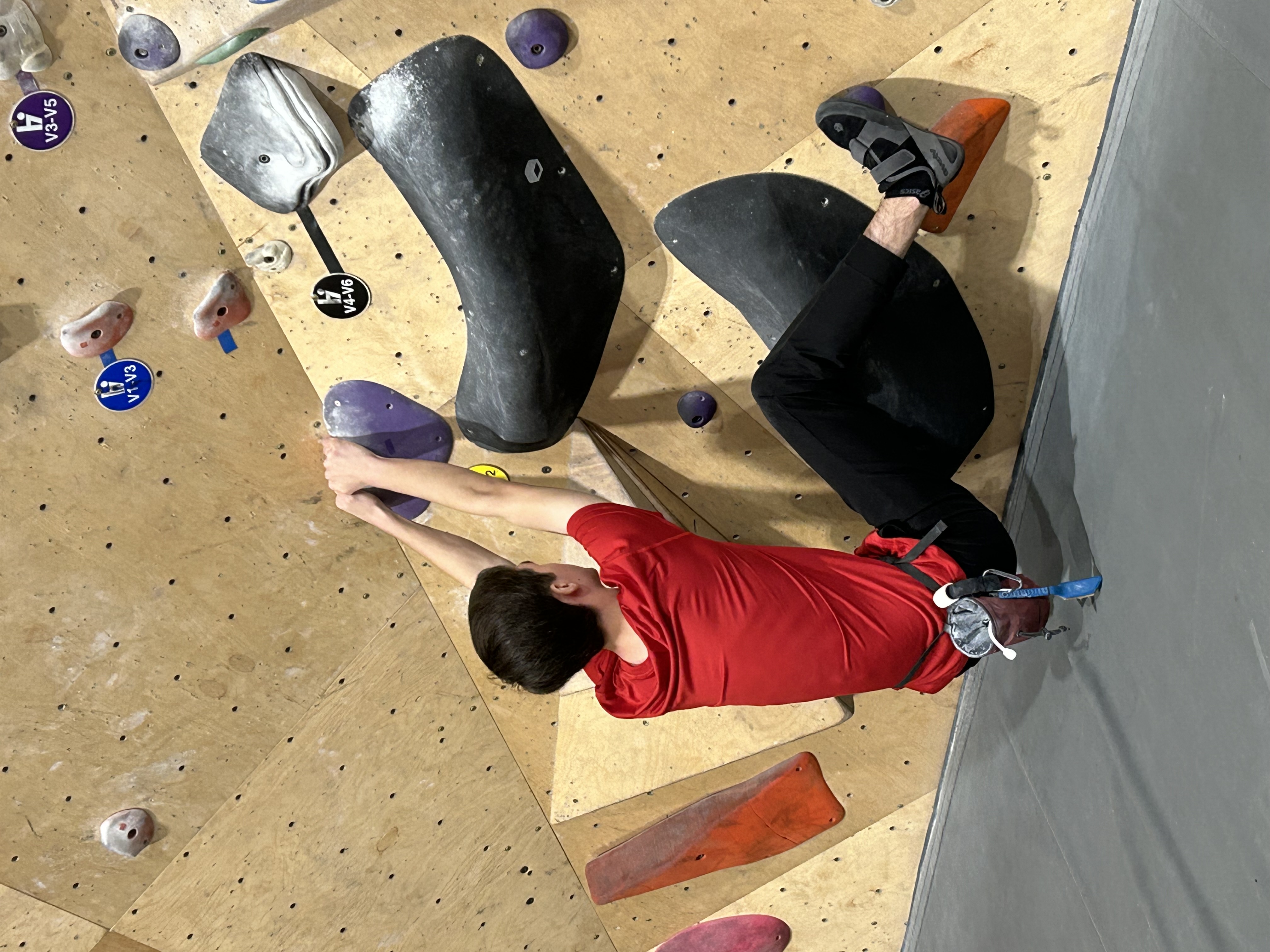
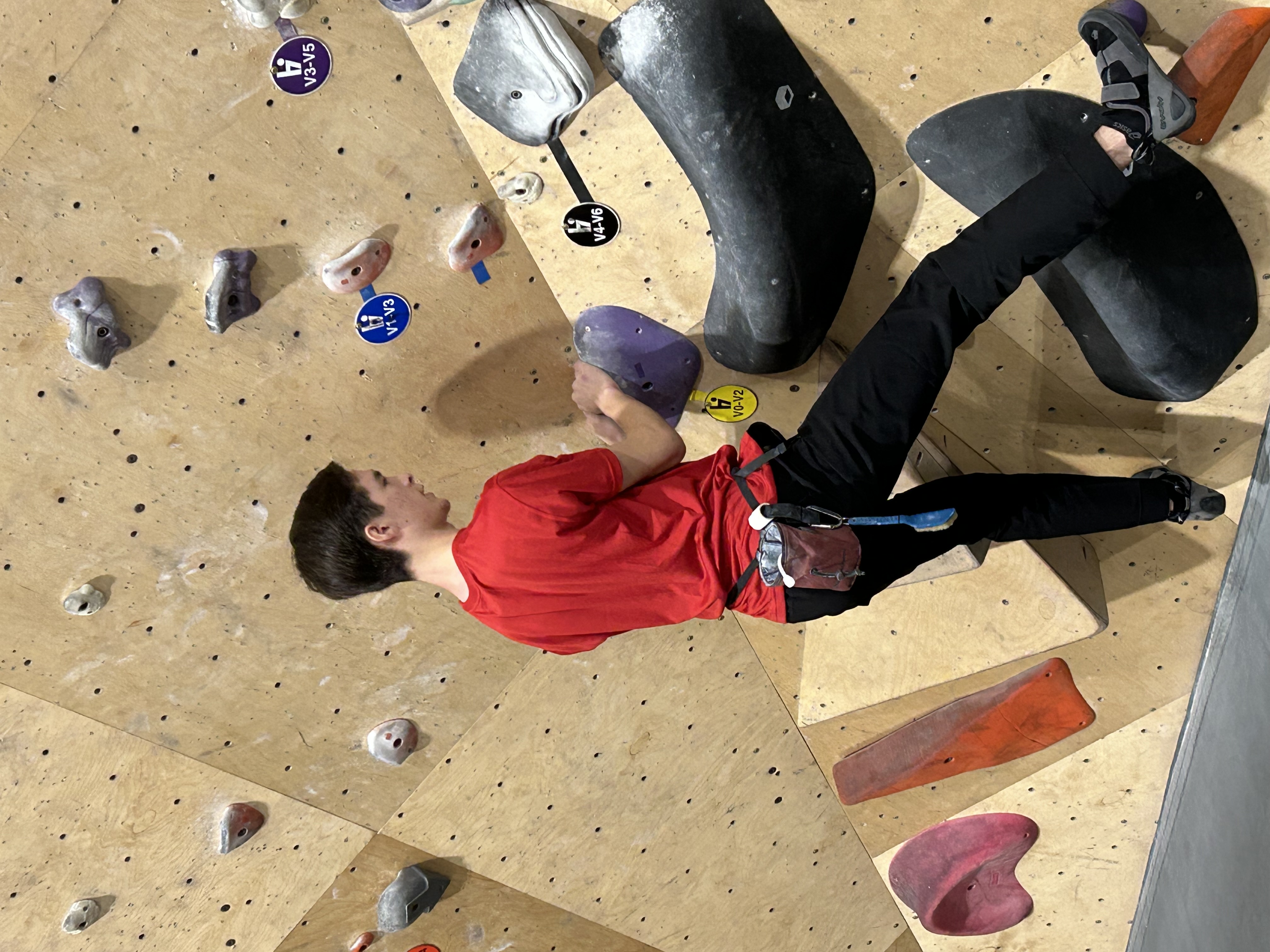
Keeping hips close to the wall
By keeping hips close to the wall, climbers will not slip off the wall as easily or as quickly. The climber’s center of weight becomes closer to the wall meaning it takes time to fall backwards. Moreover, since their center of weight is closer to the wall, more weight is placed on their feet rather than their arms. This helps save energy in the arms.
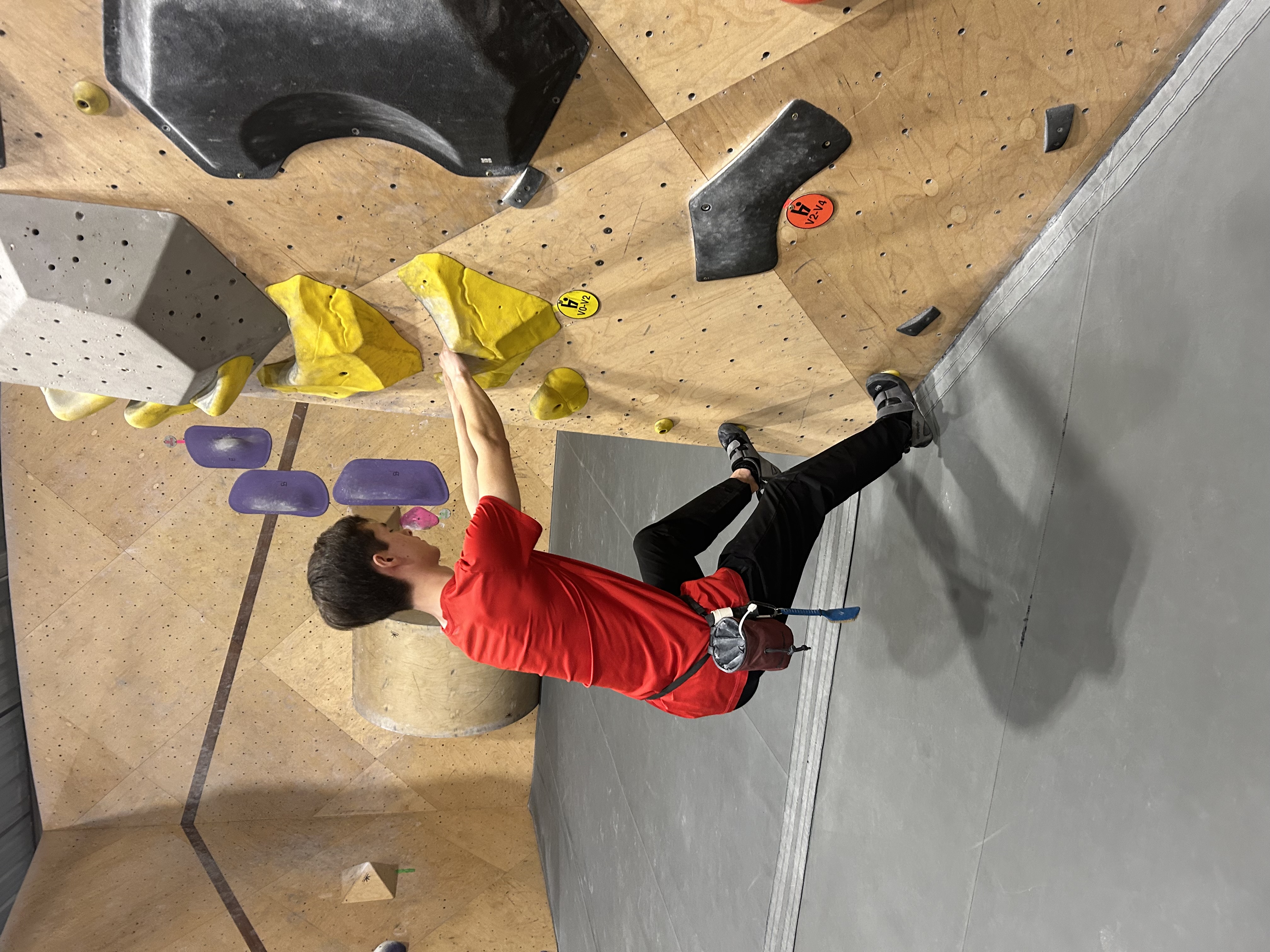
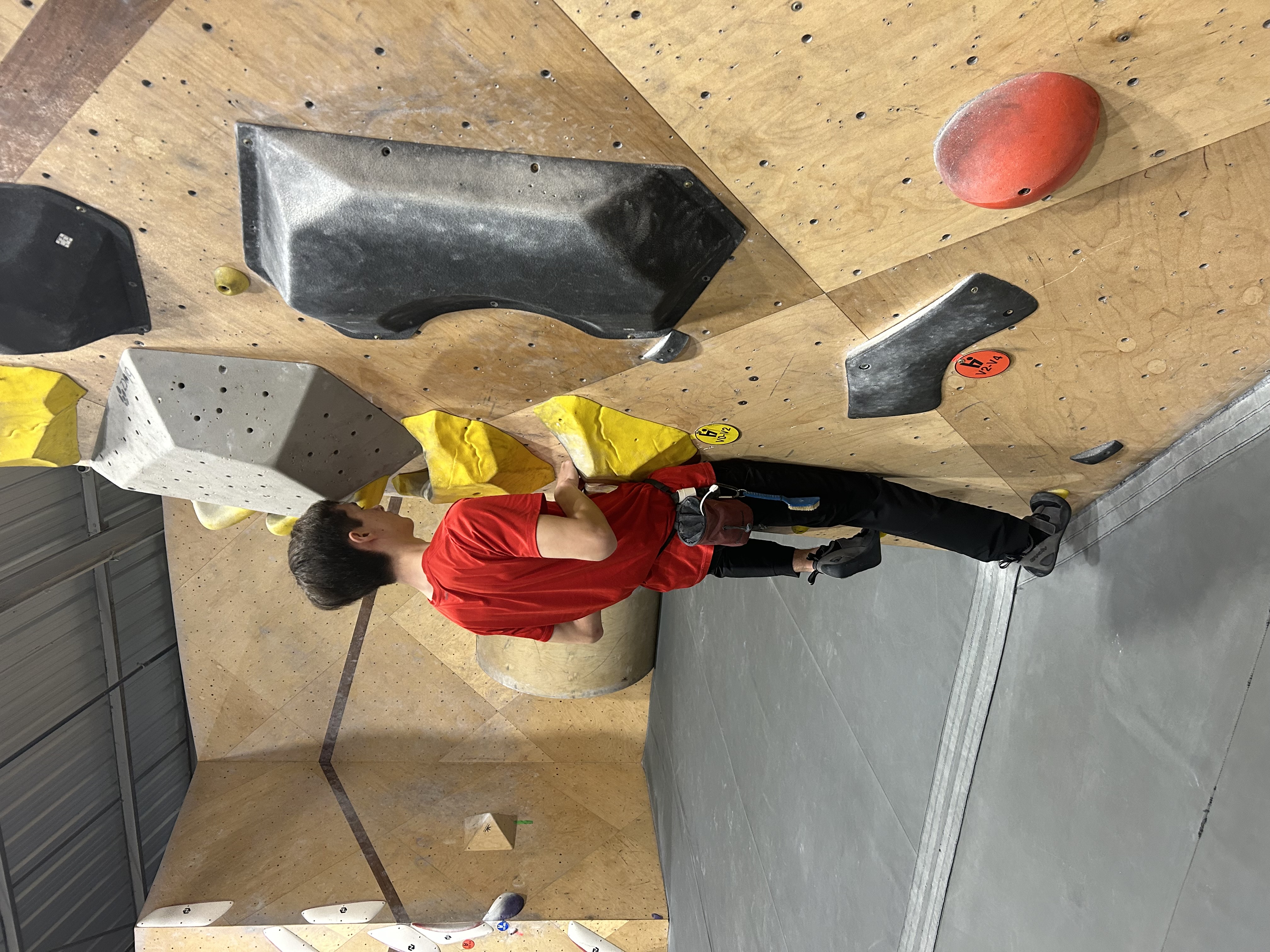
Place more weight on the feet over the arms
Legs are built for endurance while arms are not. This is because legs always hold up the body while walking, running, etc. By positioning the legs to take more of the weight, climbers can save energy and make moves easier to complete. Feet are just as important as arms in climbing!
Three-point contact
Try to always imagine a triangle between the usual three points of contact—where each of the limbs are. Only consider three points of contact because the last limb is reaching for the next hold. The triangle formed by the limbs helps determine how easy the movement is. The general rule is that the wider the base, the easier the movement of the last limb becomes. The narrower the triangle is, the more pressure required for the climber to stay on the wall. Therefore, try to find ways to make a wider base. Keep in mind that this does not apply to all climbs because of dynos or less than the three points of contact on the wall.
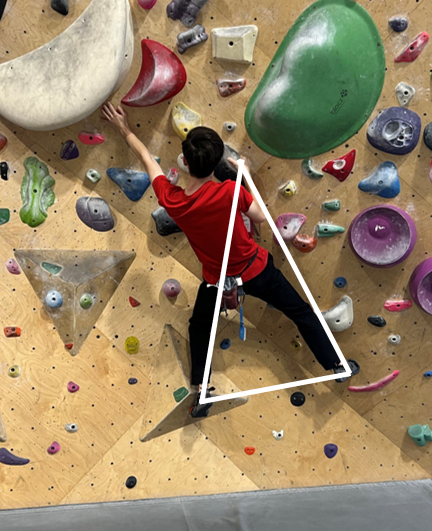
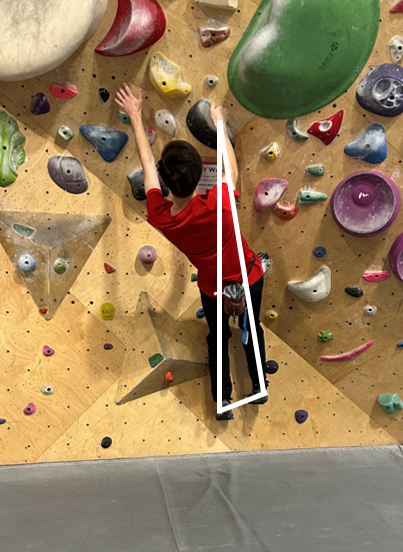
Techniques
For some of the techniques, I will be including physics explanations for them. Here are some key terms and some things to know while you view the images and read the explanations.
Changes in the color of the force vectors do not have any significance. This just helps make the arrows more visible. However, dotted arrows represent the force being applied by the climber. This is important because applied force should be recognized but is not included on the free body diagrams (the images with just a circle, arrows, and labels).
Key terms for physics explanations:
Normal force – the force from a surface against the thing applying a force. For example, when a climber presses down on a hold, not only does the climber apply a force onto the hold, but the hold also applies a force against the hand. The normal force will always be equal and in the opposite direction of the force being applied.
Weight – the force of gravity on an object.
Friction – the force that opposes movement when two surfaces are in contact.
How friction is increased
Let's say your body starts slipping down because the weight force is greater than the total friction force.
You can increase the friction force by applying more force to the holds.
This is because the friction force increases as the normal force increases.
The normal force is always equivalent to the force being applied to the surface and therefore increases as more force is applied to the surface.
Bat hang
Let's say your body starts slipping down because the weight force is greater than the total friction force. You can increase the friction force by applying more force to the holds. This is because the friction force increases as the normal force increases. The normal force is always equivalent to the force being applied to the surface and therefore increases as more force is applied to the surface.
Placing one’s feet on a hold above their body where they end up completely upside down held up by their toes.
The physics behind the bat hang:
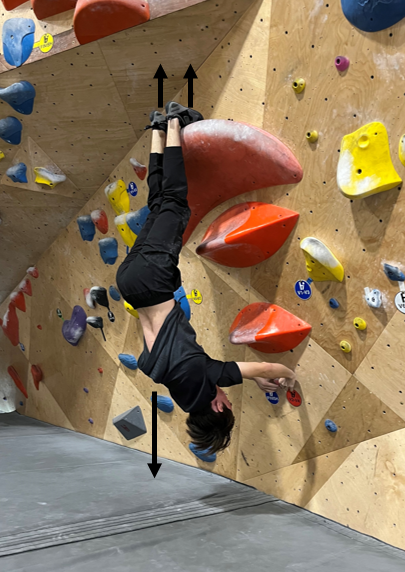
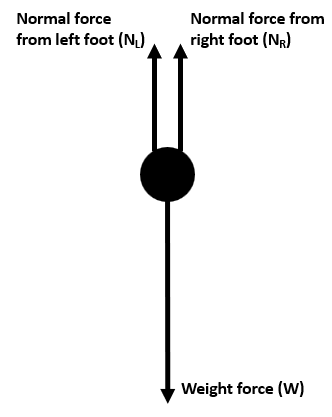
The feet hooked on the climbing hold apply a force onto the hold through the weight (W) of the climber pulling the body down. This results in a normal force (NL and NR). The total normal force is equivalent to the weight force (NL + NR = W), keeping the climber in place, also known as static equilibrium.
Bicycle
Doing a toe hook and standing on a hold normally at the same time. This is mostly seen on overhang climbs.
The physics behind the bicycle:
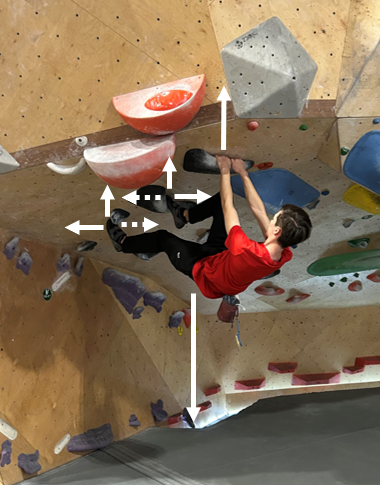
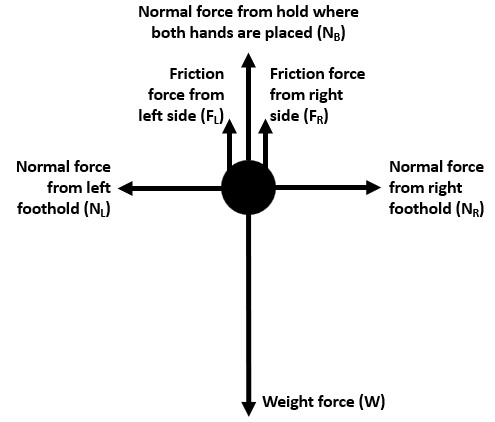
This technique focuses on using friction (FL and FR) from the feet to help hold the climber’s body up. Friction (FL and FR) is present because of the normal force (NL and NR) from the foot holds. Moreover, normal force (NL and NR) exists because of the feet applying a force (AL and AR) against the holds. The left foot doing a toe hook applies a force (AL) pulling towards the climber. The right foot applies a force (AR) pushing away from the climber. In addition to the forces caused by the feet, the hands apply a force on the hold through the weight (W) of the climber pulling down, which results in a normal force (NB) that helps counteract gravity. The total friction force and normal force from the hand hold is equivalent to the weight and therefore keeps the climber from falling (FL + FR + NB = W).
Bridge
Placing one’s feet on two different walls to hold oneself up.
The physics behind the bridge:
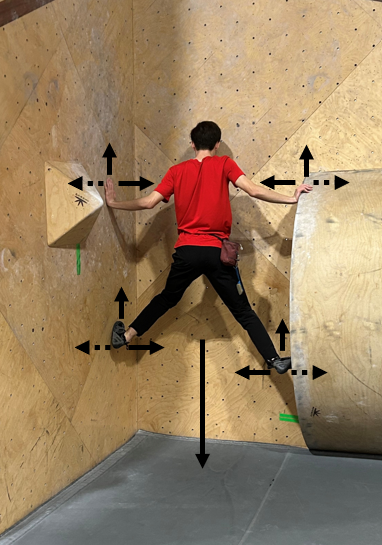
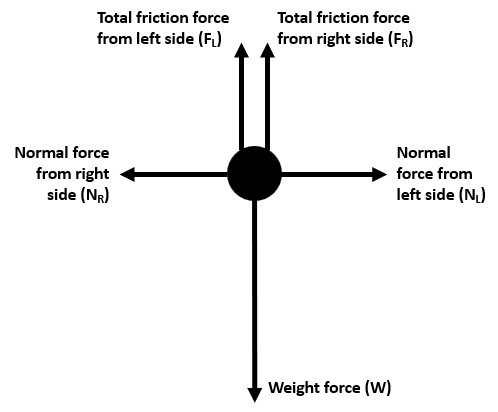
Both the hands and feet apply force (AL and AR) to the side pushing away from the body. The wall and volume apply an equal and opposite normal force (NL and NR) against each hand and foot. The force from the contact between the hands, feet, wall, and volume apply a friction force (FL and FR) upwards. The total friction force resists the weight (FL + FR = W) of the climber pulling down and therefore keeps the climber in place, also known as static equilibrium.
Cross through
Crossing an arm or a leg through the other to reach a hold.
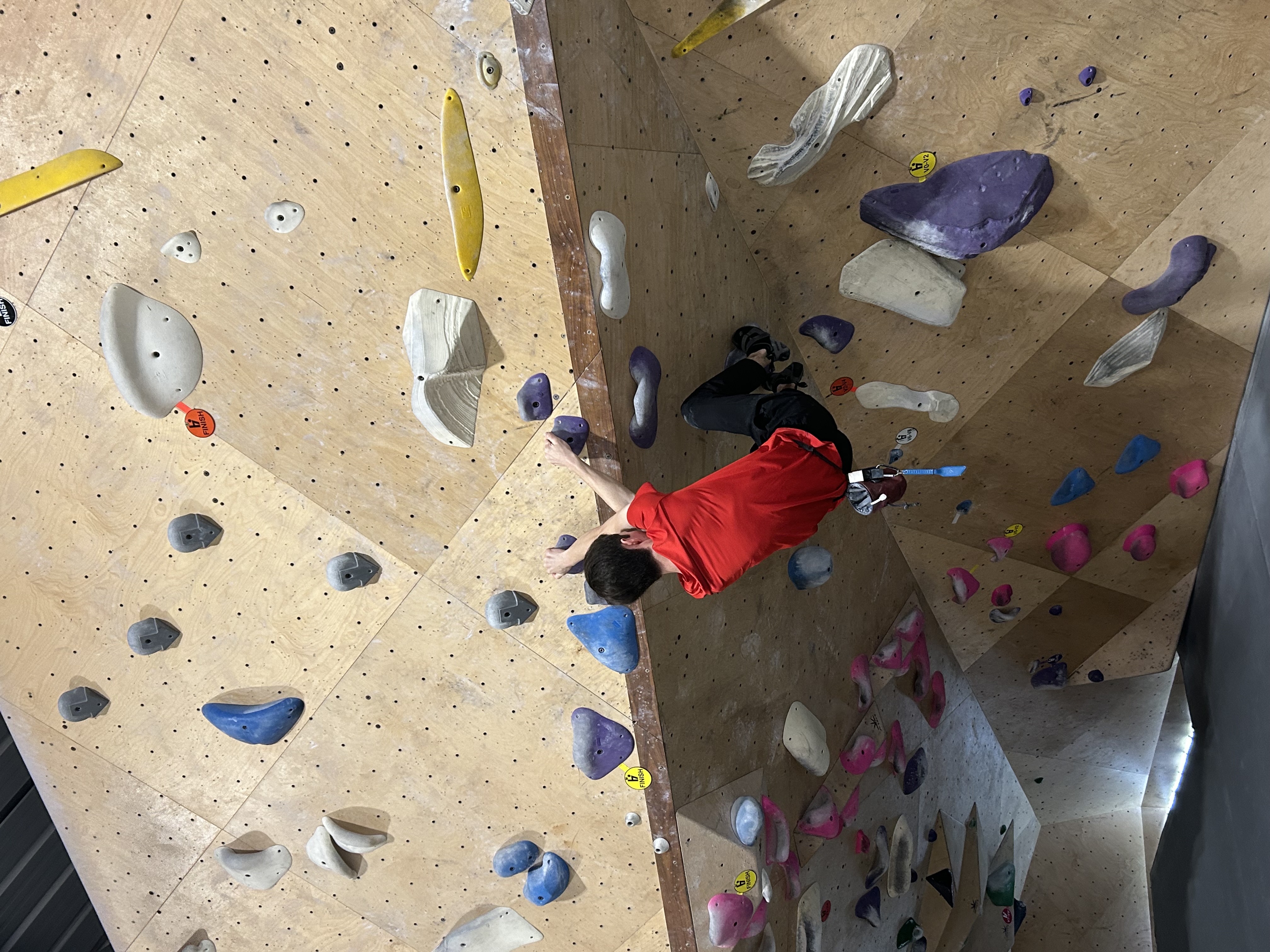 =
=
Drop knee
Twisting one’s knee downwards to bring the climber closer to the wall and provide more reach for the arm on the same side as the knee doing the drop knee.
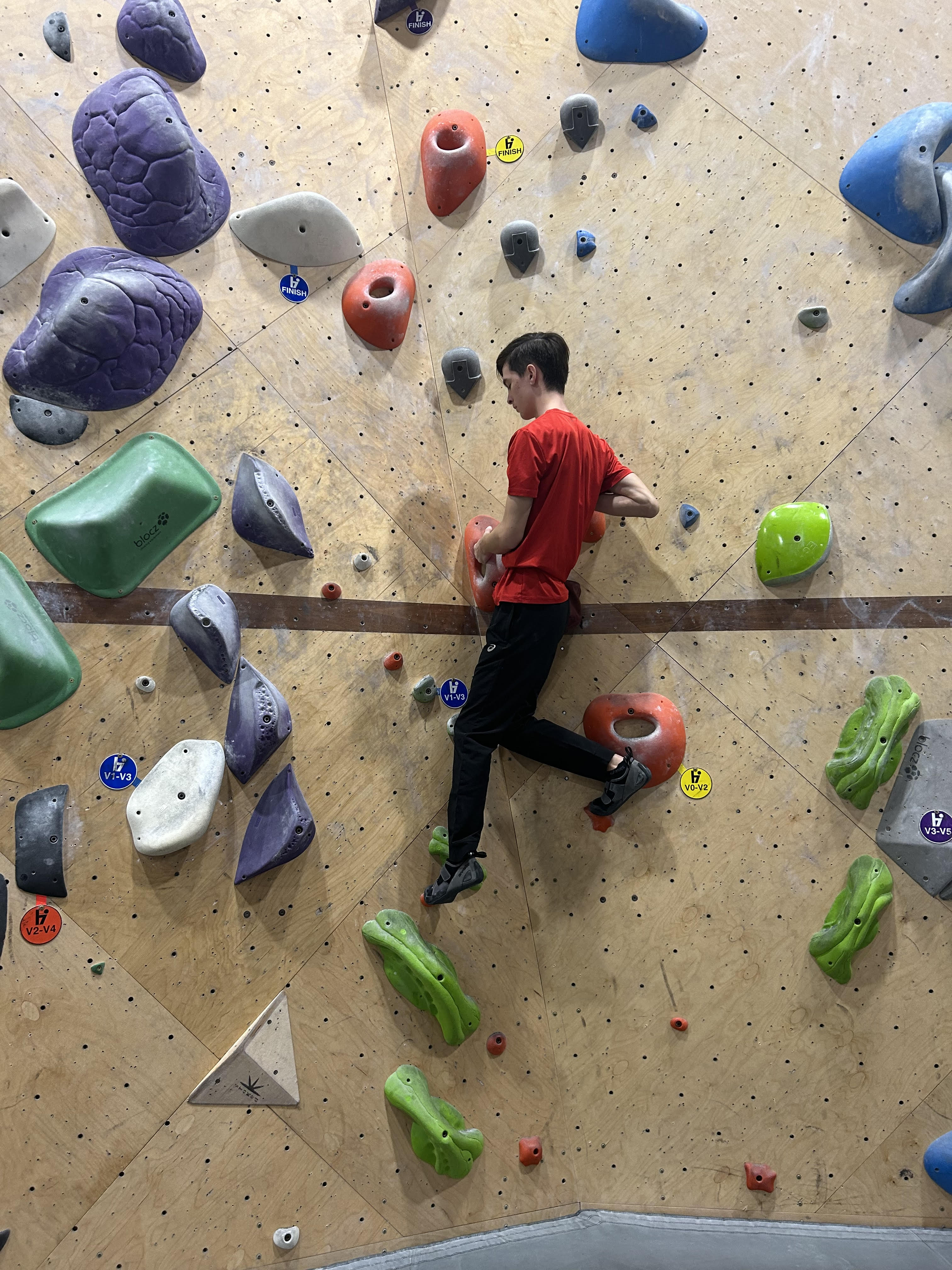 =
=
Flag
Positioning one’s leg to balance themselves on the climb.
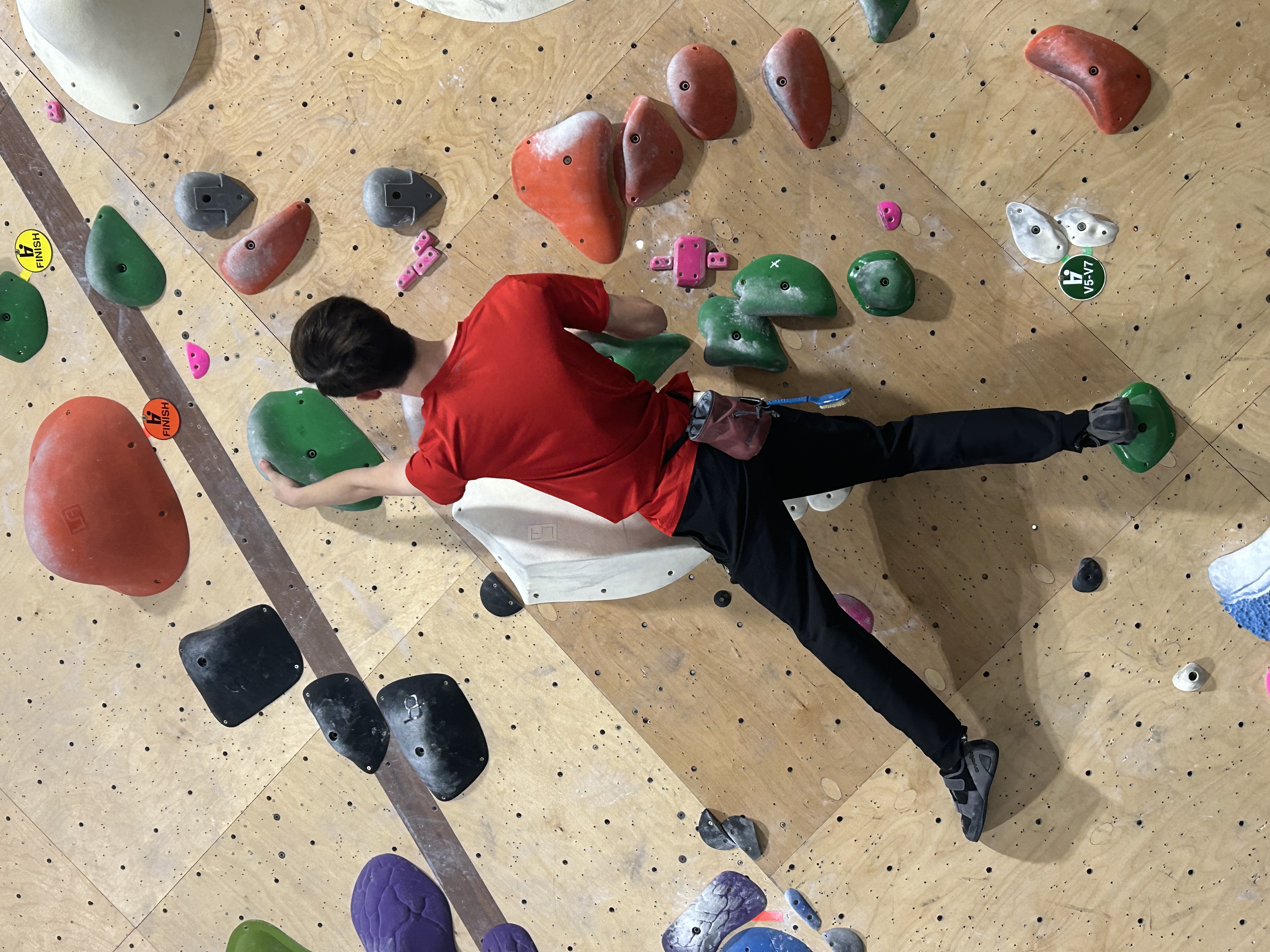
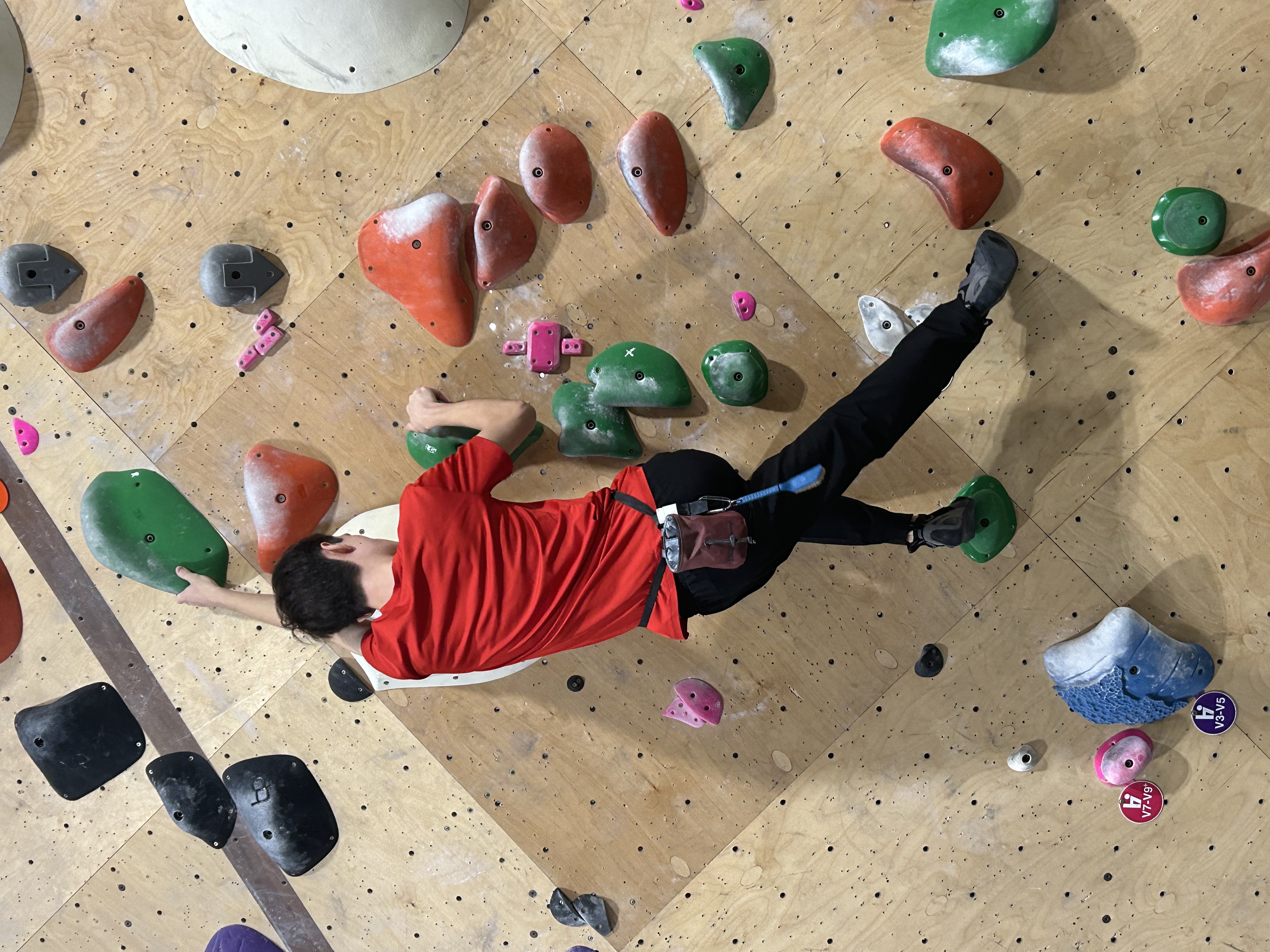
Gaston
Pulling outwards to hold oneself up because the grabbable part of two holds are faced towards each other.
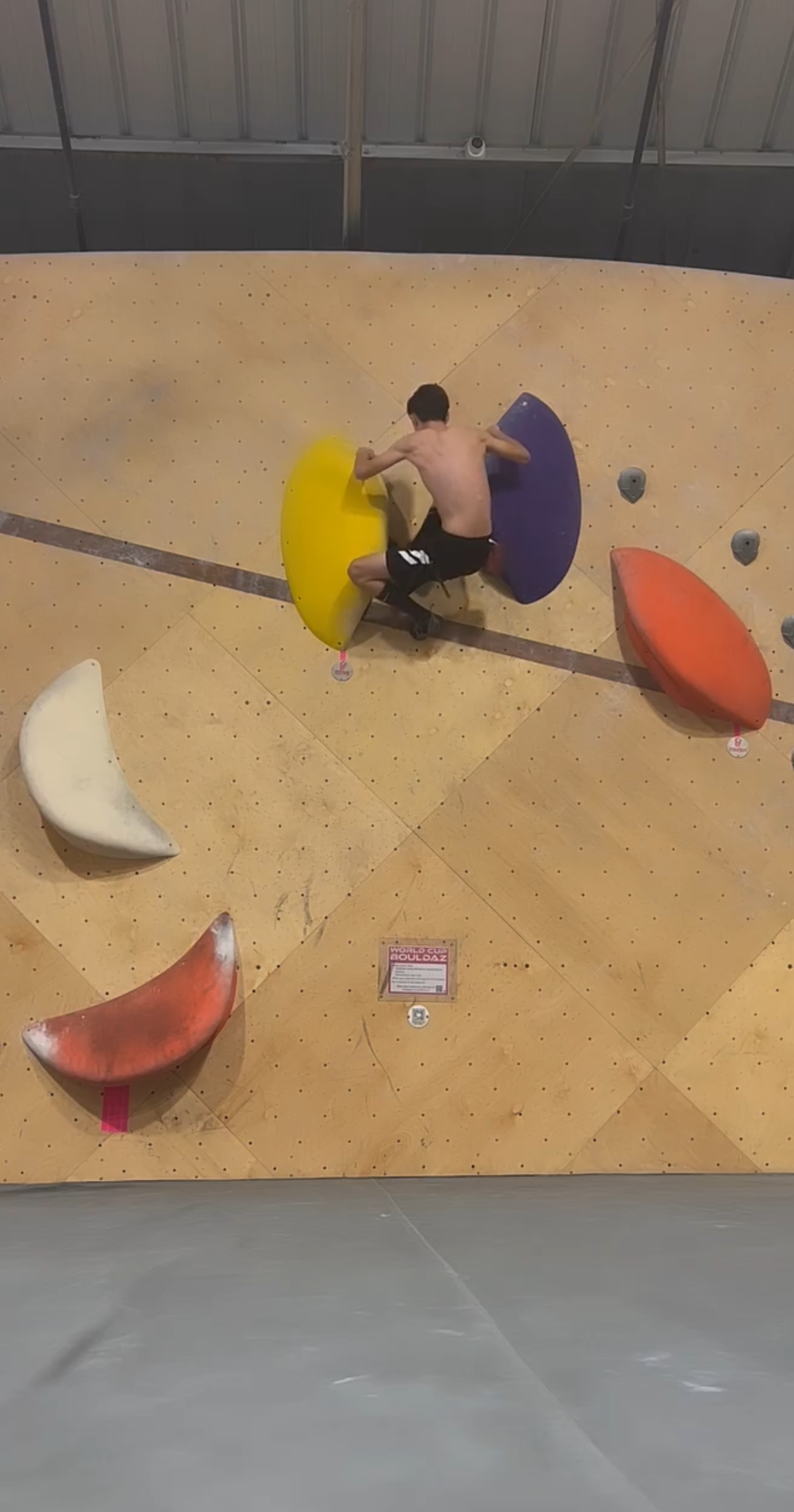
Hand jamming
Sticking one’s hand in between two surfaces while making different shapes with the hand inside to create friction.
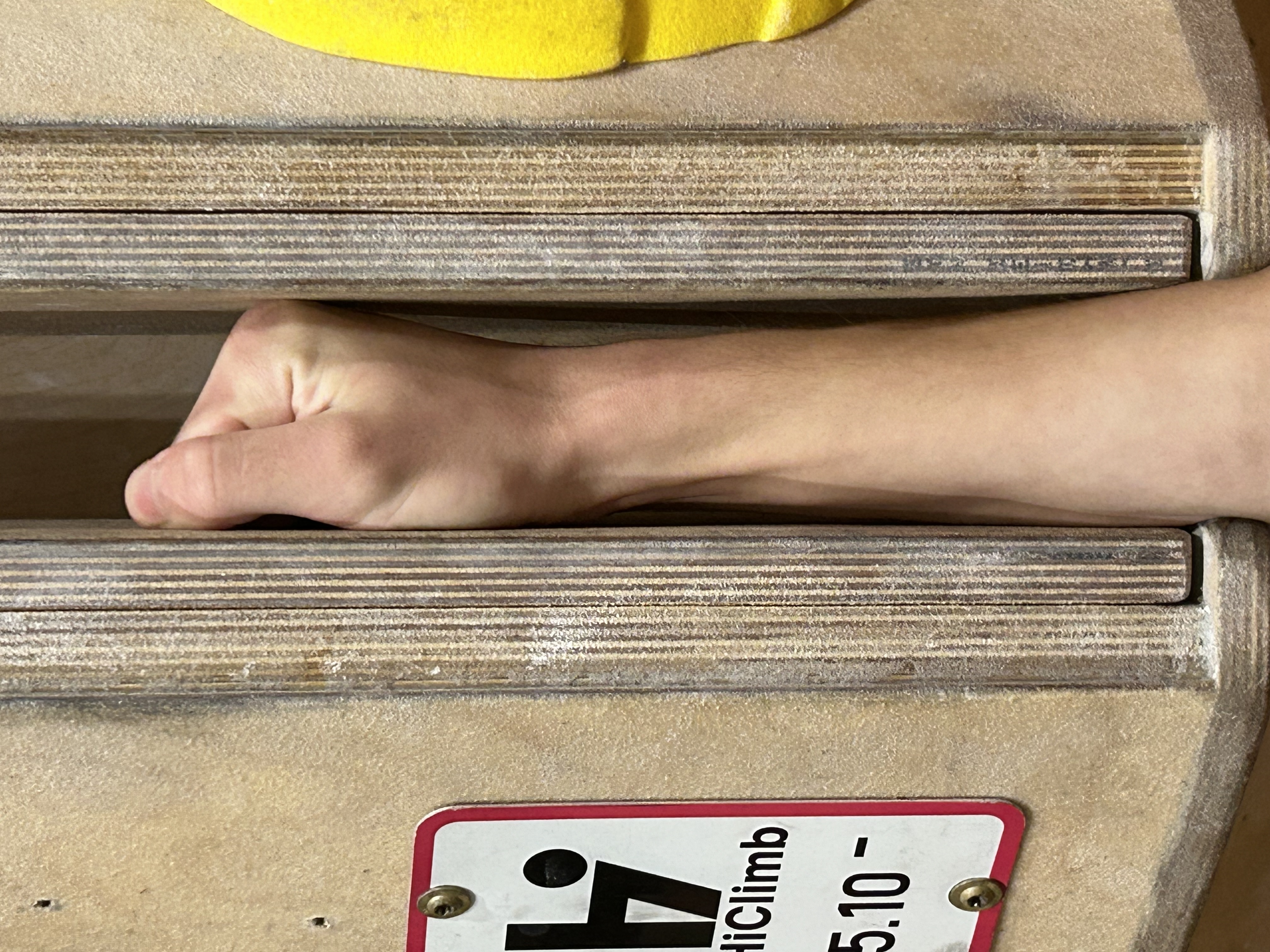
Heel hook
Hooking the heel part of the foot on a hold to secure themselves.
The physics behind the heel hook:
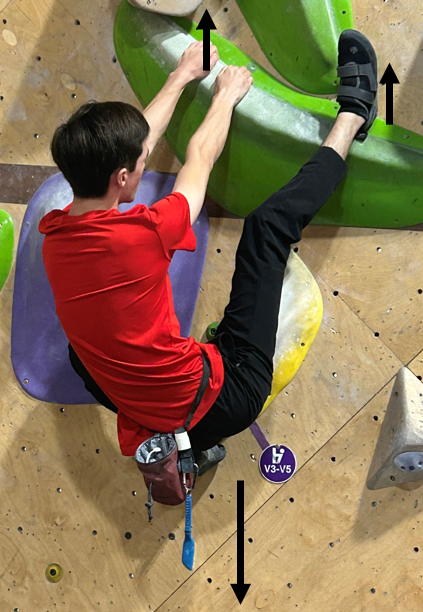
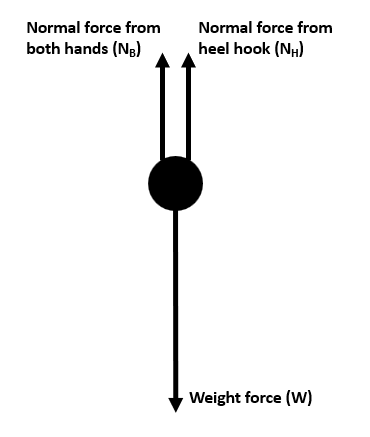
Along with the hands, the heel hook applies a force on the hold through weight (W) pulling down on the climber. This applies a normal force (NB and NH) from the hold against both hands and the foot. The total normal force is equivalent to the weight (NB + NH = W) pulling down meaning that the climber stays in place, also known as static equilibrium.
A couple of common uses of the heel hook among climbers is to help pull themselves above a hold or to stabilize themselves as they make a transition.
Knee bar
Sticking one’s knee into a hold to add another point of contact, which provides more security for the climber.
The physics behind the knee bar:
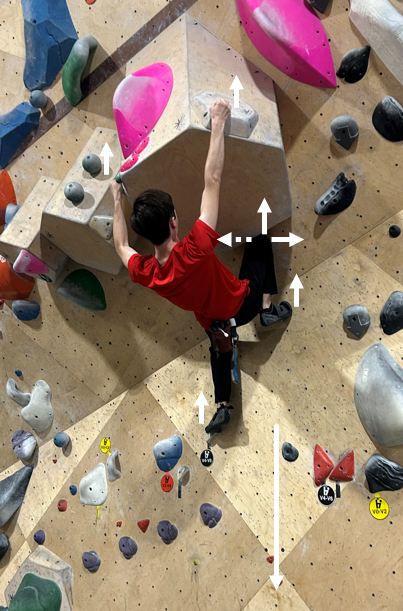
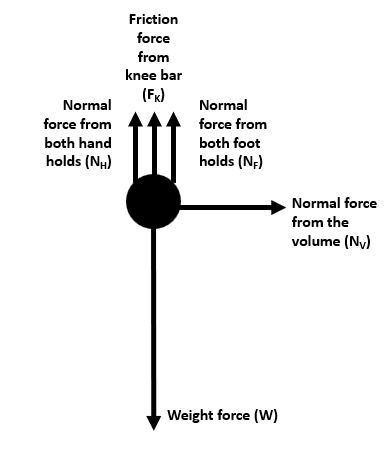
The purpose of a knee bar is that it adds another point of contact. The forces resisting weight (W) are the normal force from the hand holds (NH), normal force from the foot holds (NF), and the friction force caused by the knee bar (FK). The knee applies a force against the volume (AK) towards the climber’s body, which also results in a normal force from the volume (NV) against the knee. This produces a friction force (FK) upwards resisting the weight force (W).
Rock over
Shifting weight over a foot on a foothold.
Side pull
Pulling inwards to hold oneself up because the grabbable part of two holds are faced away from each other.
The physics behind the side pull:
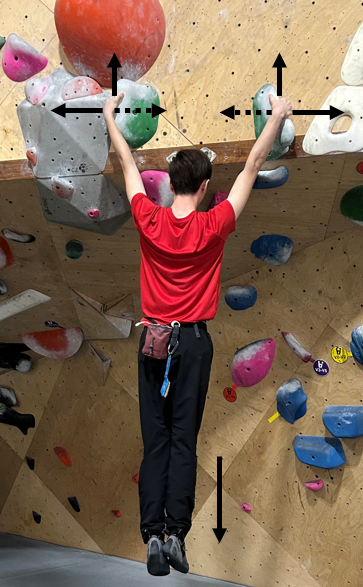
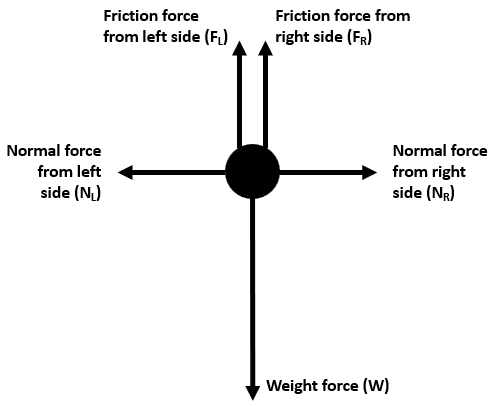
The force applied (AL and AR) from the hands results in two types of forces: normal force (NL and NR) and friction (FL and FR). Normal force (NL and NR) is the force applied from the hold against the hand. It is equivalent to the amount of force applied from the hand (NL = FL and NR = FR). Friction (FL and FR) is the force that opposes movement when two surfaces are in contact, which happens between the hands and the holds. The movement friction opposes is gravity pulling the body downwards, which is known as the weight force (W). The sum of the friction force from both hands and holds is enough to resist the weight force and therefore keeps the body stable or in other words in static equilibrium (FL + FR = W).
Smear
Rubbing one’s foot on a hold to create more friction and establish a secure foot placement.
Toe hook
Hooking the toe part of the foot in a hold to secure themselves.
The physics behind the toe hook:
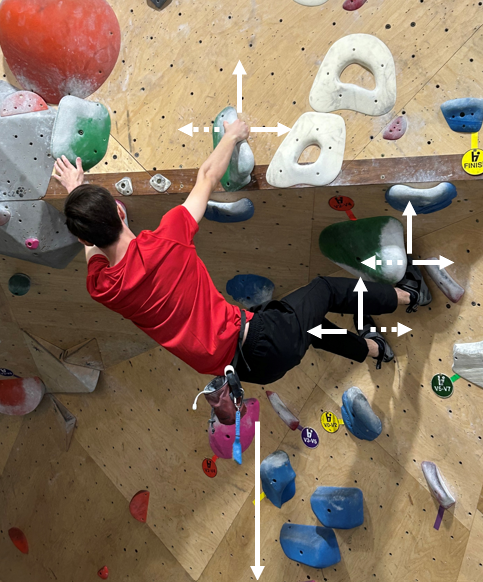
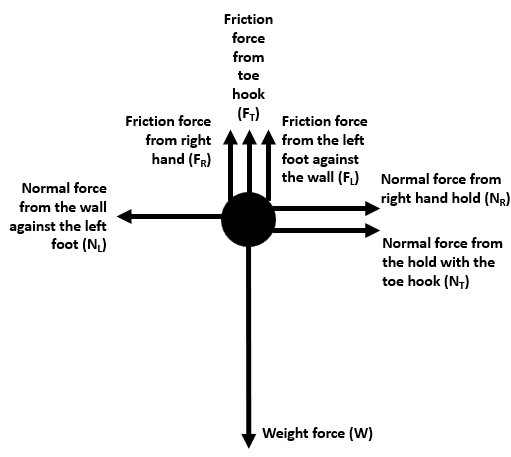
The toe hook applies a force (AT) against the hold towards the climber’s body. This produces a normal force (NT) from the foothold against the toe hook, which results in a friction force (FT) directed upwards. The friction from this toe hook helps resist the weight force (W) along with the friction force from the right hand (FH) and the friction force from the left foot pushing against the wall (FL). The friction force from the right hand (FH) occurs similarly to the toe hook. The right hand applies a force to the handhold (AR) that also causes a normal force from the handhold (NR). As for the left foot, it applies a force against the wall (AL), which causes a normal force from the wall against the foot (NL). This results in a friction force from the contact between the foot and the wall directed upwards (FL).
Disclaimer: This website only provides tips for indoor rock climbing. Additionally, individuals must be responsible for their own health and safety.